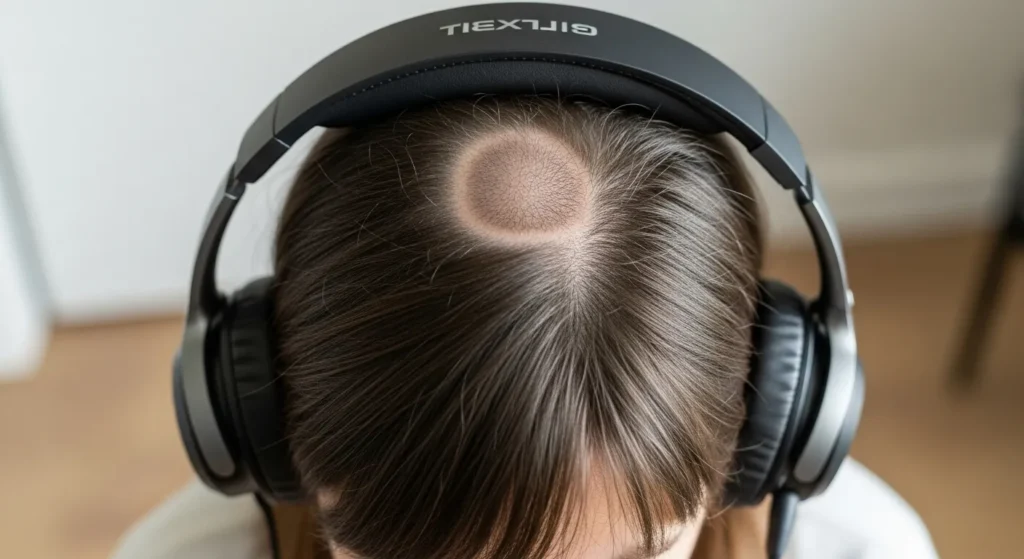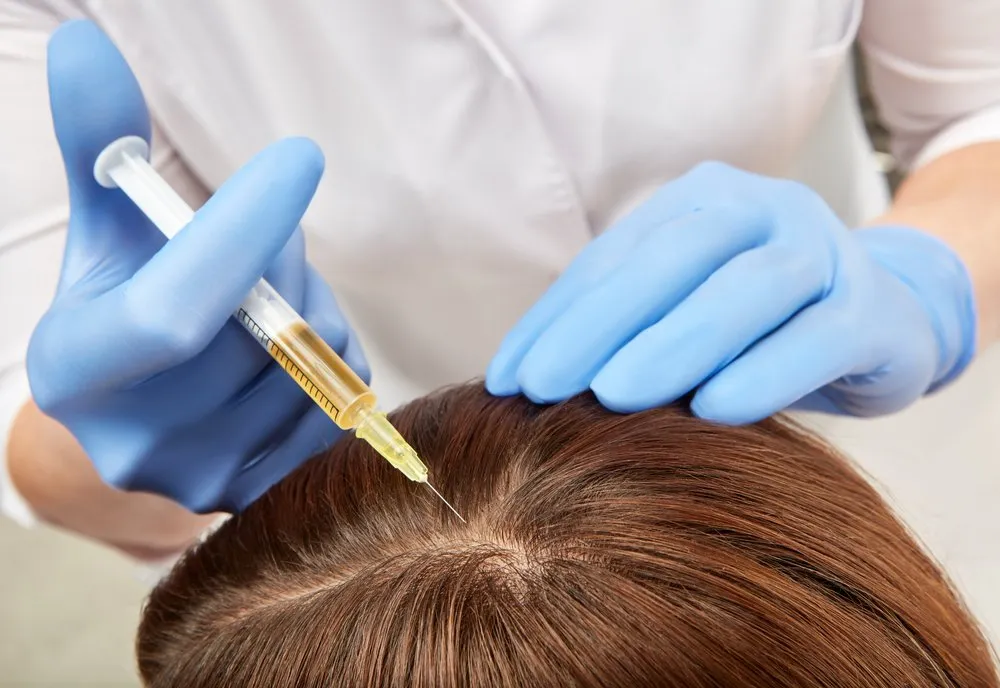If you’ve ever wondered, “Do headsets cause hair loss?” you’re not alone. With long work hours and extended gaming sessions becoming the norm, people are noticing hair thinning or bald spots where their headset sits.
This article explores the science behind headset-related hair loss, offers practical prevention strategies, and highlights expert guidance to help protect your hair and scalp. Discover whether your headset habits are harming your hair and what to do about it.
Understanding the Concern: Why People Link Headsets to Hair Loss

Many individuals begin to worry when they notice:
- Hair thinning around the crown or sides of the head
- A line of hair loss where the headset band rests
- Scalp irritation after long hours of wearing headphones
These concerns have grown significantly with the rise of remote work, gaming culture, and call center jobs, where headset use can exceed 6–8 hours daily. Over time, this constant pressure and friction on the scalp may trigger noticeable changes.
Can Headsets Cause Hair Loss? What the Science Says
Traction Alopecia Explained
The most likely cause of headset-related hair loss is a condition known as traction alopecia. It happens when constant pulling or tension on hair strands weakens the follicles, leading to gradual shedding.
Sweat, Heat, and Scalp Irritation
Wearing headphones for long durations can trap sweat and heat. This creates a warm, moist environment that:
- Encourages bacterial buildup
- May lead to folliculitis (inflammation of hair follicles)
- Increases itching, which leads to scratching and damage
Poor Scalp Circulation: Myth or Reality?
Some argue that tight headsets restrict blood flow to the scalp, but current evidence for this is inconclusive. However, chronic pressure may indirectly affect follicle health over time.
Material Sensitivities or Allergic Reactions
Low-quality headset padding may cause contact dermatitis or allergic reactions, especially in individuals with sensitive skin. This can lead to inflammation and hair loss in the affected area.
Risk Factors: Who’s More Likely to Experience Hair Loss from Headsets?
Not everyone is equally affected. Higher-risk groups include:
- Men with receding hairlines or thinning crowns
- Women with fine or fragile hair
- Gamers, customer service workers, and remote employees using headsets 6+ hours daily
- People using tight, over-ear headphones without proper adjustment
Pro Tip: If you already have a predisposition to hair thinning, consider your headset choice and usage pattern more carefully.
How to Prevent Hair Loss from Headsets
Choose the Right Headset
- Opt for lightweight, adjustable, and cushioned headsets.
- Look for models labeled “ergonomic” or “low-pressure fit.”
Adjust Your Wearing Habits
- Take regular breaks (every 30–60 minutes)
- Alternate headset positions on your head
- Avoid wearing the headset over wet or sweaty hair
Improve Scalp Hygiene
- Wash your hair regularly to remove sweat and oils
- Clean your headset pads with antibacterial wipes weekly
Use Headband Liners or Hair Protectors
- Soft cotton liners or thin beanies can act as a barrier between the headset and scalp
- Reduces direct friction and absorbs sweat
Switch to Earbuds When Possible
- In situations that don’t require over-ear audio quality, earbuds offer a safer alternative
What to Do If You Notice Hair Thinning or Bald Spots
Early Signs of Traction Alopecia
- Thinning along the headset band area
- Scalp soreness or tenderness
- Broken or short hairs in the affected zone
When to See a Dermatologist or Hair Loss Specialist
Seek expert help if:
- Hair doesn’t grow back after reducing headset use
- You notice spreading hair loss or inflammation
- You experience persistent scalp irritation
Treatment Options
- Topical Minoxidil (Rogaine) to stimulate regrowth
- PRP Therapy for scalp rejuvenation
- Low-Level Laser Therapy (LLLT) for follicle activation
- Anti-inflammatory shampoos or medications

Recovery Timeline for Hair Regrowth
- 2–4 weeks: Reduced irritation and early regrowth
- 2–3 months: Noticeable hair thickening
- 6+ months: Full recovery in most mild to moderate cases
FAQs About Headsets and Hair Loss
Can wireless headsets reduce hair loss risk?
Not necessarily. The key factor is fit and pressure, not whether it’s wired or wireless.
Is it better to use earbuds than headsets?
Yes, especially for long-duration use. Earbuds apply no pressure to the scalp hair.
How long can I wear a headset without risk?
Limit sessions to 30–60 minutes at a time with short breaks.
Will hair grow back if headset use is reduced?
In most cases of early traction alopecia, yes, especially with proper treatment.
What types of headsets are safest for daily use?
Look for over-ear models with soft padding, adjustable headbands, and low clamping force.
Final Thoughts: Do Headsets Cause Hair Loss?
While headsets themselves don’t directly cause hair loss, improper usage can contribute to traction alopecia, especially with prolonged tension, heat, and poor scalp care.
The good news? It’s completely preventable and often reversible when caught early. Prioritize scalp hygiene, choose ergonomic gear, and don’t ignore early signs of hair stress.
If you’ve noticed thinning hair or scalp irritation from headset use, don’t wait. Book a consultation with Dr. Rana Irfan, Islamabad’s trusted ABHRS-certified hair restoration expert.
With over 20 years of experience and advanced treatments like PRP and FUE, Dr. Irfan provides personalized care to help you regrow and protect your hair confidently.
